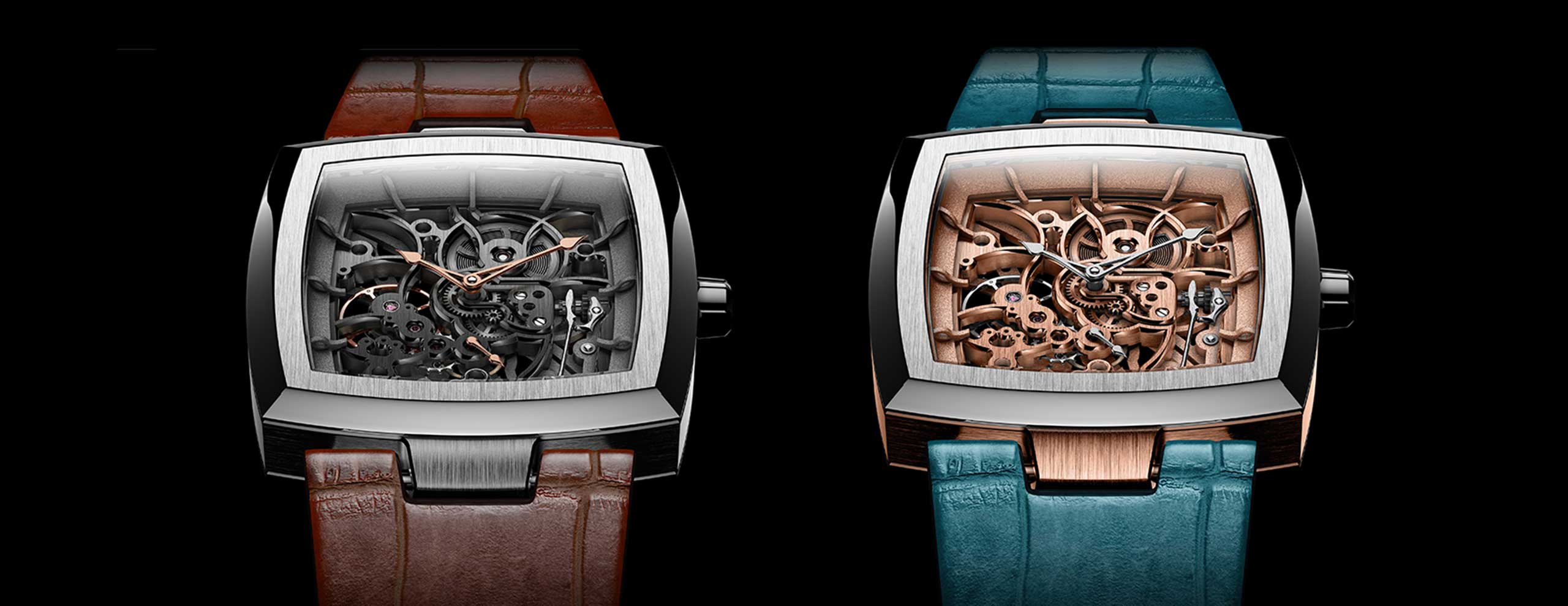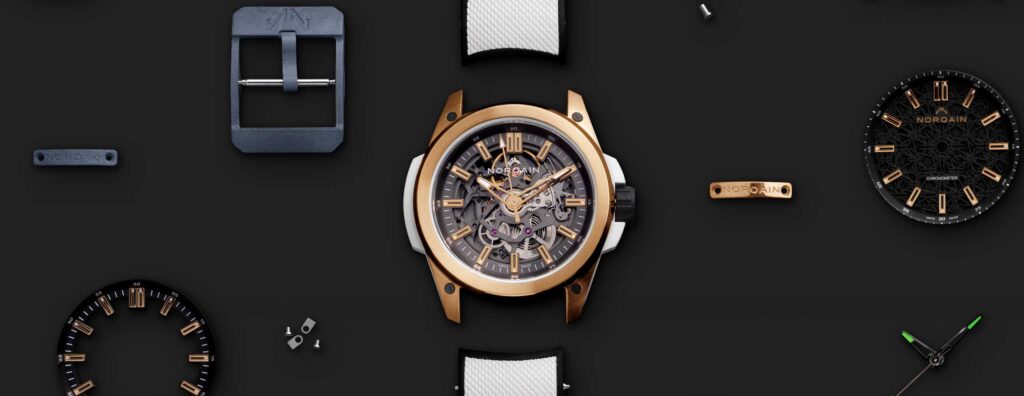A skeletonized watch executed to the highest level with a total of 211 internal angles.
The concept of skeletonized watches traces its roots back to the late 18th century, with André-Charles Caron, clockmaker to King Louis XV and the father-in-law of Jean-Antoine Lepine, often credited for having pioneered the first openworked timepieces. The art of skeletonization as it was originally practiced was to offer a tantalizing glimpse into the components that lay within these watches. Early forms of skeletonization involved not only cutting away excess material but also meticulously engraving the remaining parts to enhance the aesthetic appeal of the movement.
Throughout the history of wristwatches, the evolution of skeleton watches has reflected the changing trends and technologies in watchmaking. Today, advancements in modern technology and the use of high-tech materials have resulted in ever airier and edgier skeleton watches. However, while the modern approach to openworking, characterized by angles and geometric shapes, has provided a canvas ripe for the highest level of hand-finishing, like finishing itself, it is rarely brought to its pinnacle. Put simply, due to the skill and labor involved and the fact that it cannot be carried out at scale, given the number of edges and intersections a skeleton movement can present, they are rarely finished by hand entirely and angles are rarely sharp. Hence, Philippe Narbel’s latest creation, the SKEL-1, represents one of the few time-only watches on the market that takes the art of skeletonization to its logical conclusion.
Philippe Narbel began his journey as a self-taught jewelry artisan. He started his career with Audemars Piguet at the age of 29, initially as a trainee, then as a watchmaker for six years and another two years as a decorator. It was during his time there that he became captivated by the intricate art of skeletonization. In fact, he had worked on one of Audemars Piguet’s most extraordinary Royal Oaks – the 3132 Double Balance. Additionally, he was one of only two watchmakers at the brand who possessed the expertise in crafting the parts of skeleton grand complications such as the Royal Oak Offshore Grande Complication, whereby the entire cutting and finishing processes of the mainplate and bridges were manually executed without the aid of electro erosion machines.
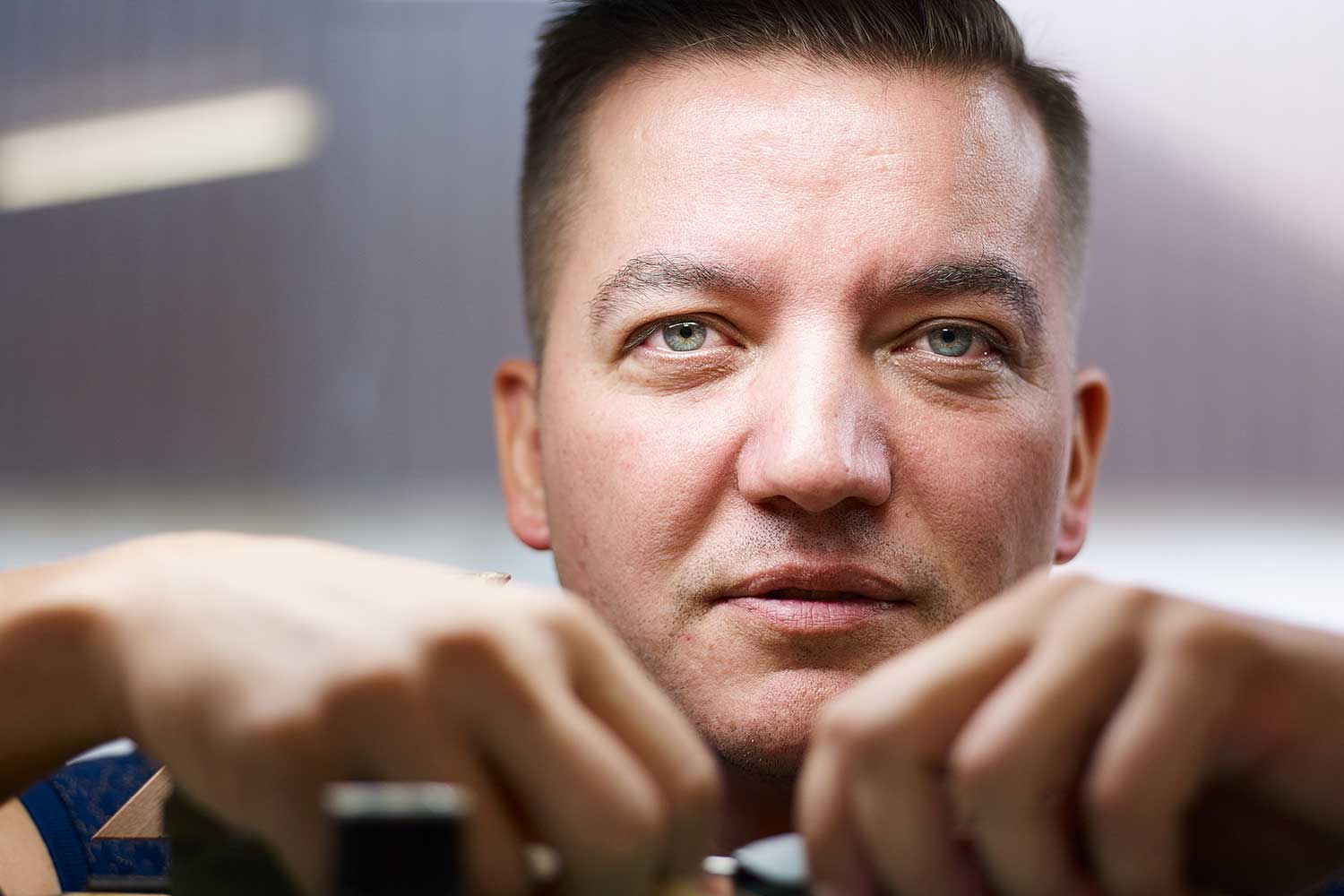
Philippe Narbel
In 2015, he established his own atelier,
Manufactor, located in the Vallée de Joux, specializing in anglage, hand engraving and skeletonization. Today, fellow independent watchmakers such as Armin Strom and Sartory Billard, as well as major players like Audemars Piguet, continue to enlist the services of his workshop. In 2021, he introduced his first watch – Roots, a time-only watch with a TV-screen case that houses a Peseux 7001-based movement that was recreated and finished to the nines.
The SKEL-1 has the same TV-screen cushion case that measures 40mm by 40mm. It is rather classically proportioned due to its slim central lug design and its overall height of just 11mm. It is available in two versions which can be further customized – in steel with a black gold coloured movement or a bicoloured white and rose gold case with a 5N gold coloured movement. The case has a wide polished bevel on both the bezel as well as the case back while the top surfaces and the case middle are satin-brushed.
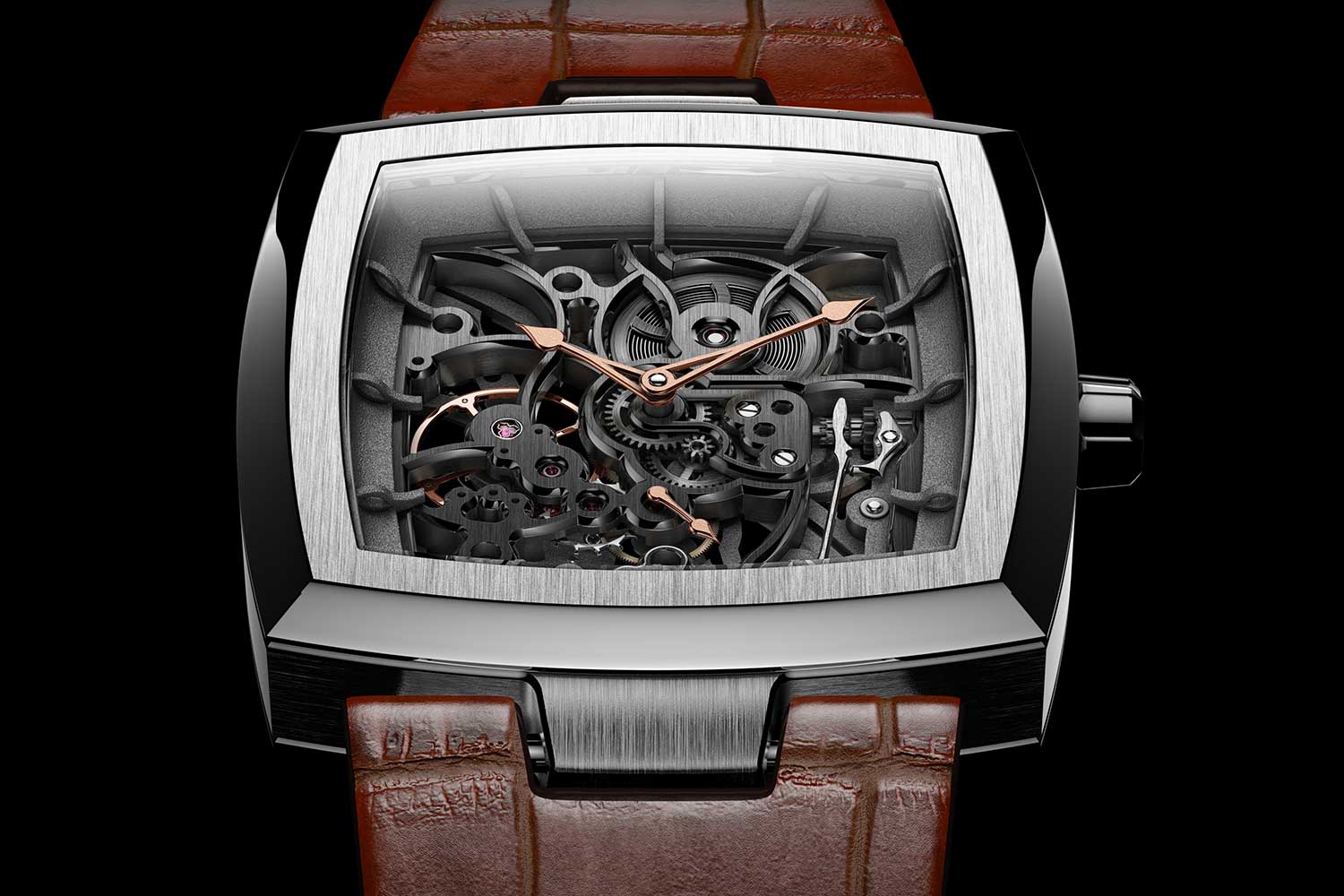
The SKEL-1 in steel with a black-gold plated German silver movement
Although there is no traditional dial, the contrasting hands make it easy to read the time while not detracting from the beautiful movement. The hands themselves have been skeletonized, incorporating numerous inwards angles. The chapter ring features applied baton hour markers that have a gentle S-curve, guiding the eye downward to the intricately skeletonized movement. While the movement still adopts the train layout of the Peseux 7001, it was purposefully designed and produced from scratch to demonstrate an abundance of anglage and internal angles, totaling an astounding 211.
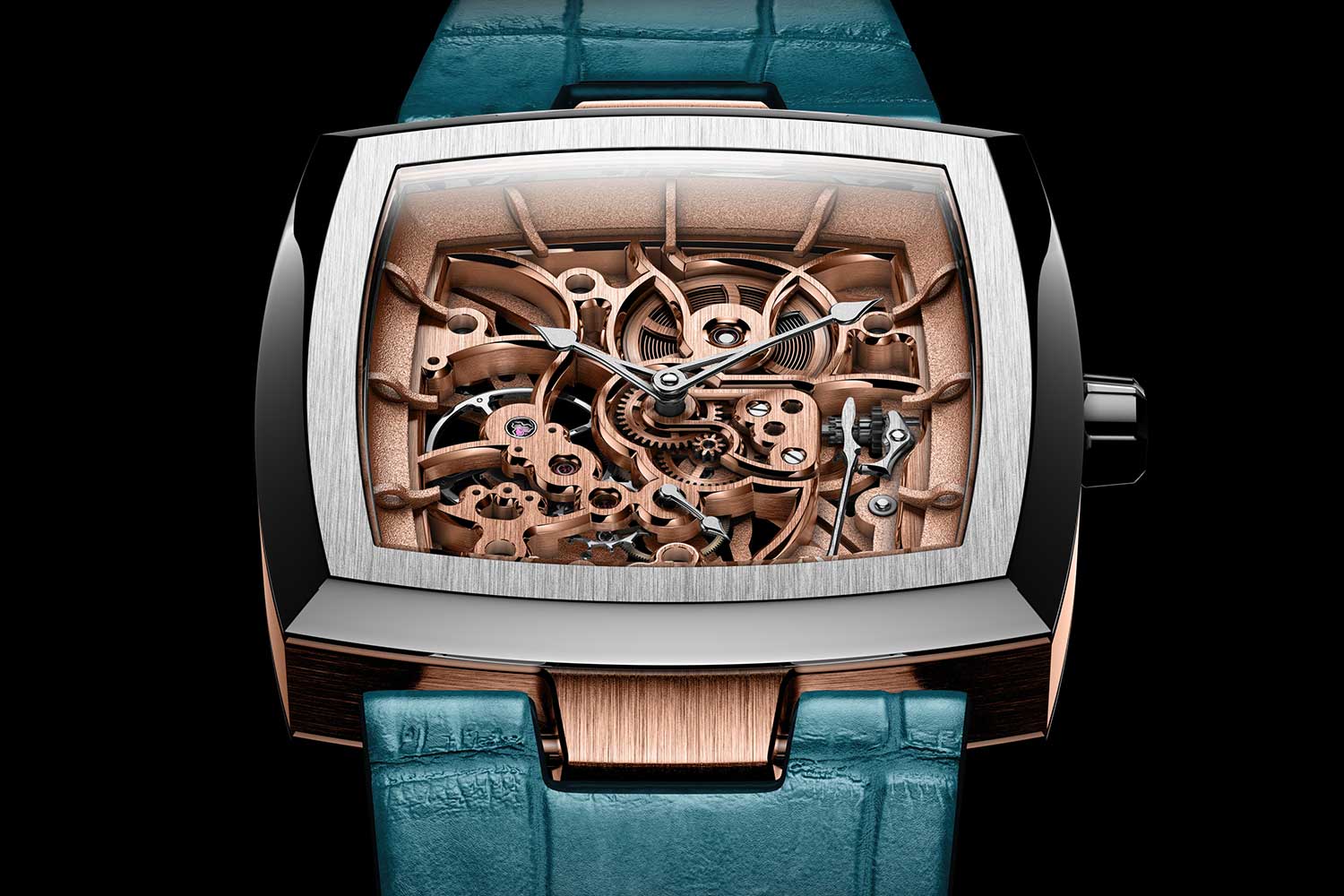
The bi-coloured version has a white gold bezel and case back while its case band is in rose gold. The main plate and bridges are made of 5N gold-plated German silver
Naturally, due to the time- and labor-intensive nature of hand-finishing, electro-erosion techniques are employed for the skeletonization but Narbel explains that manual skeletonization remains a possibility for crafting unique, one-of-a-kind pieces. After the plates and bridges are produced, frosting using a sandblasting pen is the first step in the finishing process, followed by the application of a protective varnish to safeguard the sandblasted surface before applying further finishes. The flanks then undergo straight-graining and the edges are decorated with anglage.
Hand-formed anglage is an arduous multi-step process. Narbel first uses a carbide chisel to create rough beveled edges followed by filing using two different files. The bevels are then smoothened with a diamond file and then continuously refined using a series of wooden rods covered in sandpaper. The bevel must have a consistent width throughout while faithfully following the curvature and arcs of the component. A burnishing tool is then used to eliminate any tool marks. The ultimate polish is then achieved by rubbing the bevels with diamond paste using gentian or boxwood. Narbel explains that manually guided power tools such as handheld rotary devices and polishing wheels are not used as they simply do not deliver the same quality, and naturally, sharp inward angles can only be executed by hand.
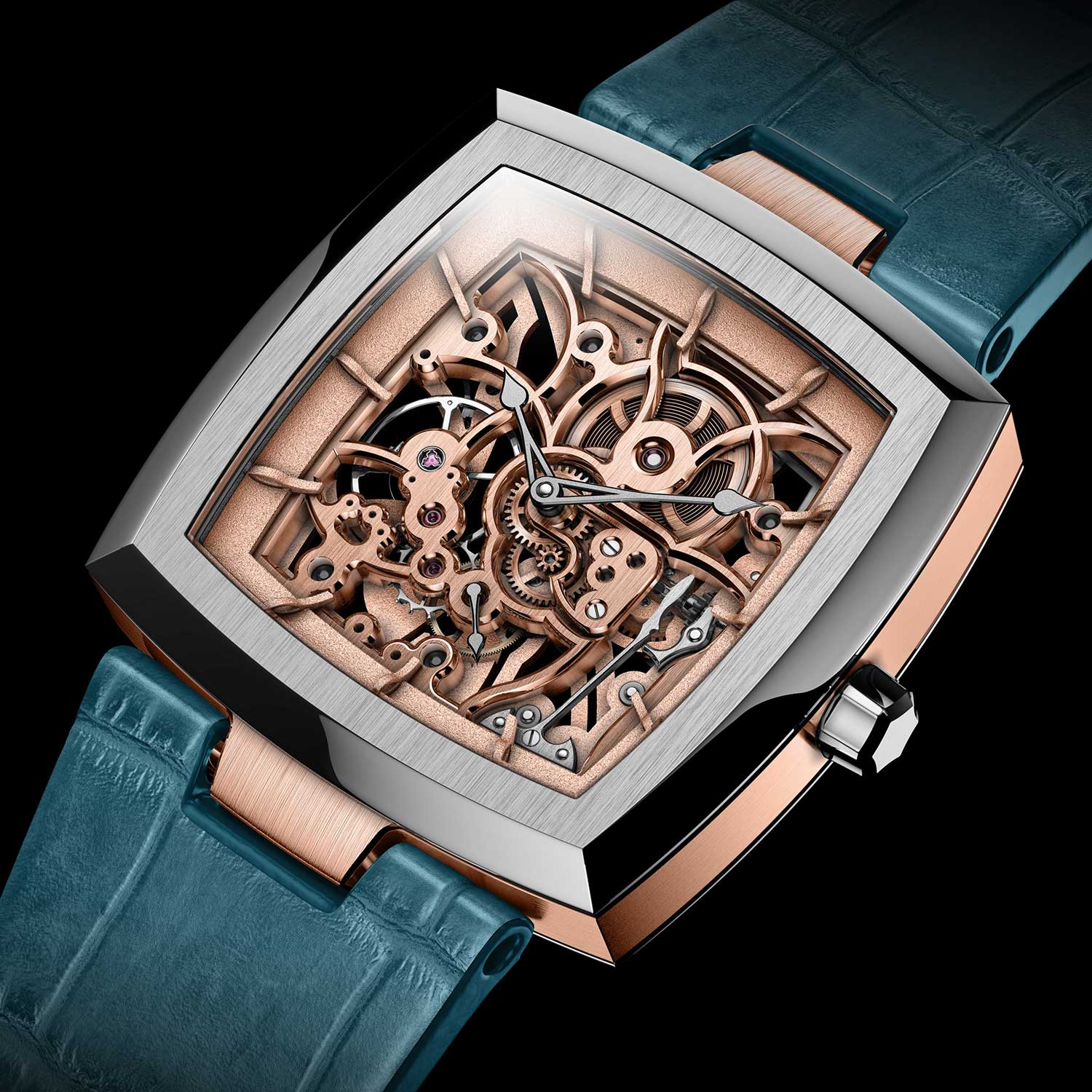
The main plate and bridges are skeletonized based on the placement of a screw or jewel countersink as well as to demonstrated the highest level of craft
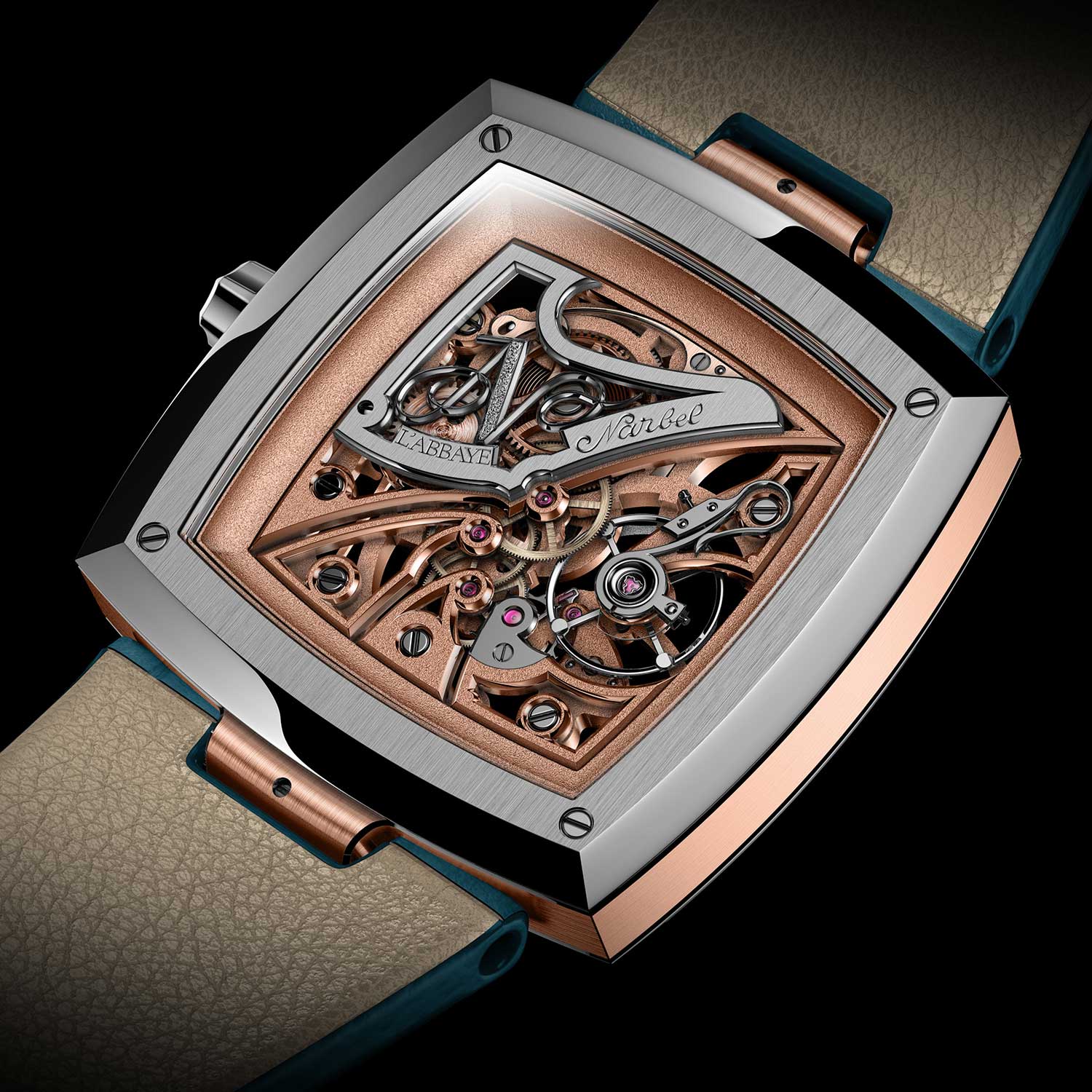
Each bridge supporting a wheel in the gear train is openworked to incorporate numerous sharp angles
The skeletonization is thoughtful and very logical where the shapes of the opened-up areas are based around a jewel or screw countersink. The bottom plate has been skeletonized to accommodate the motion works, along with a bridge that supports the hands. The tiny bridge itself is skeletonized to incorporate seven inward angles, with its void mirroring the contours the screws. The hand-setting mechanism is entirely exposed, which makes even setting the time fun to do. The barrel drum above has been cut away, exposing its state of wind, allowing it to serve as a power reserve indicator.
It gets even better on the back where the third, fourth and escape wheels are supported by their own individual bridges, shaped and skeletonized to enhance the logarithmic spiraling arrangement of the gear train. The cap jewel, which restricts the vertical movement of the escape wheel and minimizes friction, is secured in place by a black-polished steel piece. The balance wheel is free-sprung with gold weights and so the swan neck is used to adjust beat error. The finishing of steelwork of the swan-neck spring and lever are equally impressive. Not only are they black-polished on their top surfaces, but they are also beveled and polished along their entire length. The index lever and stud support are constructed as a single piece, incorporating three inward angles. Lastly, the barrel bridge is topped by a cover plate where initials can be skeletonized.
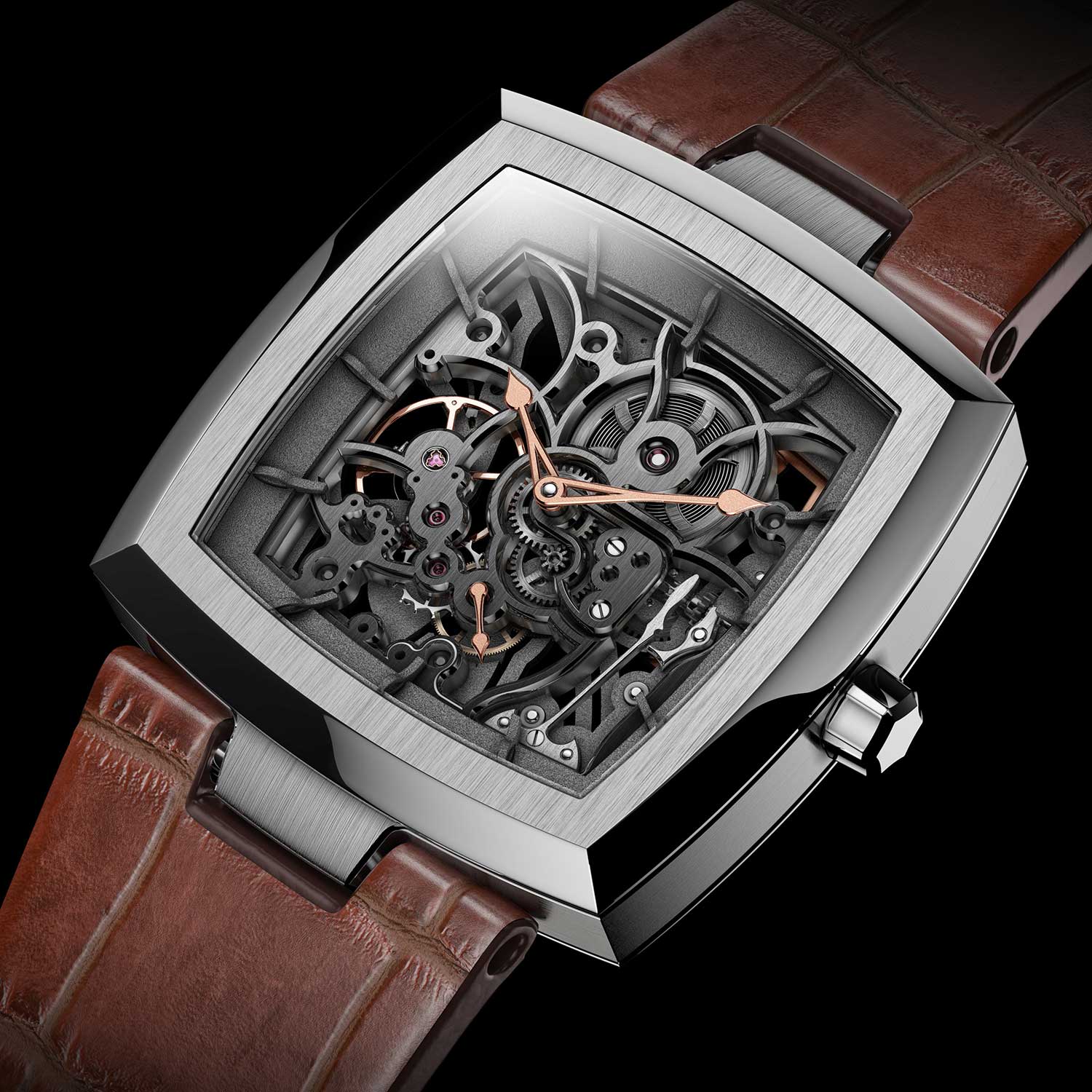
The careful use of colours makes reading the time a breeze
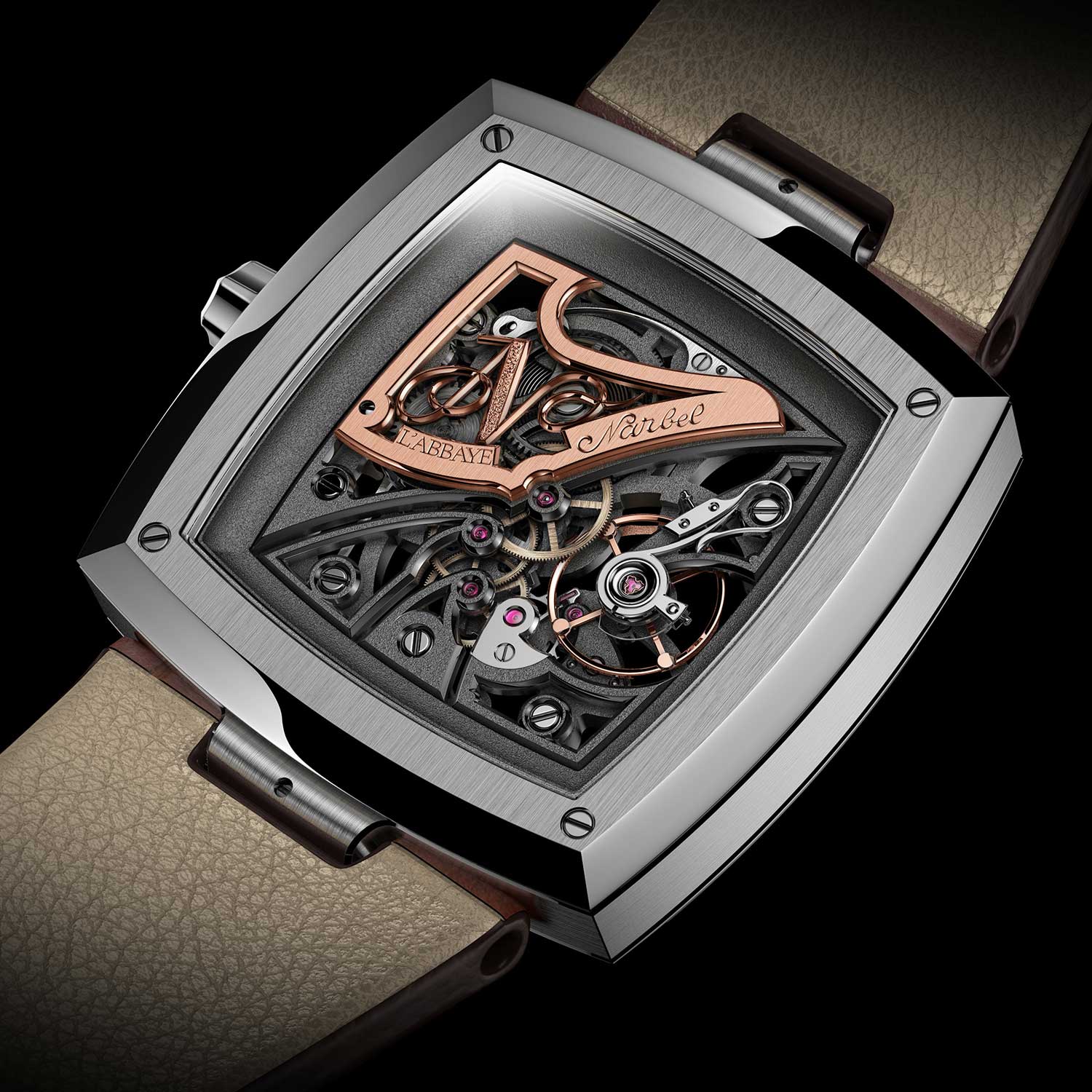
The barrel bridge is topped by a cover plate that is customizable with initials
While there are two versions of the SKEL-1 to work around, a rose gold or rhodium plated movement will no doubt provide superior visibility to the inordinate amount of handwork. But all told, this is perhaps the finest time-only skeleton watch on the market, where the irony of it all is that sharp angles which must be executed by hand in the traditional manner, serve to enforce the contemporary openwork aesthetic that many brands have sought to achieve.
Movement: Cushion-shaped skeletonized movement with 5N rose gold or black gold-plated German silver mainplate and bridges; 42-hour power reserve; 21,600vph or 3Hz
Functions: Hours, minutes, and small seconds
Case: 40mm x 40mm x 11mm; stainless steel (PHN-99000-003-H01) or bicoloured gold ((PHN-99000-003-H04)
Dial: 5N rose gold or PVD coated German silver chapter ring with applied hour markers
Strap: Handmade, materials to be defined
Price: CHF 62,000 (Steel); CHF 82,000 (Bicolor gold)











